showing entries tagged "budget"
by: IAMT
Living On Your Own And “Bill Time”
Living on your own for the first time can be empowering. It means having independence and all the things that come with it. Some of those things—like not having to share a bathroom—are wonderful. Others—like killing spiders yourself—are not so fun. And leading the pack in the not-so-fun category: bills.
The Dos and Don’ts of Debt Repayment
Consumer debt is an extremely contradictory part of our personal finances: it’s at once common and incredibly personal. According to numerous sources, the majority of US adults owe money in some way, shape or form—and yet what this consumer debt represents can vary drastically from person to person. To some, a debt might signify a major accomplishment or progress toward a large goal. To others, it might be a constant reminder of a time of crisis or hardship. The decisions that lead us to consumer debt can be thoughtful and deliberate, or rushed and misguided. It is perhaps these differences that make it challenging to talk openly about debt for fear of judgment.
Are Checks Obsolete?
Checks hold an odd place in our personal finances. In many ways, checks seem like relics from a previous era. We maybe write one or two checks a month (usually for rent or similar bill-paying situations where electronic payment simply isn’t an option). This is vastly different from only a few decades ago, when checks represented more than 85% of all non-cash retail payments. (Can you imagine whipping out a checkbook in line at the grocery store? Times have certainly changed!)
by: IAMT
The Upside of Frugality
Frugal living discussions often talk about pinching pennies or “stretching a dollar.” A penny saved is a penny earned, or so the saying goes, but is that actually the case?
by: Banzia
Be Prepared, Because Life Happens
An emergency fund is an essential part of your personal finances. Its importance is stressed in almost every personal finance book and budgeting blog, and yet 26% of Americans currently have no emergency fund in place. Of those who do have an emergency fund, up to two-thirds do not have the often-recommended six months’ worth of expenses saved up.
by: Banzai
The 3 Hidden Expenses of Pet Ownership
According to the American Pet Products Association, nearly 70% of all US households own a pet. That translates into an estimated $86 billion spent on food, supplies, medical care and pet services in 2018. Although the love and companionship our furry (or feathered, or scaly) friends provide is priceless, it’s impossible to ignore the effect that pet ownership has on our wallet.
by: ChatGPT
Budgeting Blitz - Tackling Financial Goals One Minute at a Time
A Guide to Saving Money Effectively: Budgeting is a powerful tool that empowers you to take control of your finances and save money. When done right, budgeting can help you allocate your income wisely, minimize unnecessary expenses, and work towards achieving your financial goals. Here's a step-by-step guide to budgeting properly and maximizing your savings:
by: Banzai
Making and Spending Money
by: banzai
Learning to Budget
A budget is a plan for how you’ll spend your money. To create one, you divide your income (the money you get) into your expenses (the things you buy).
by: banzai
3 Jar Allowance for Kids
The sooner you teach your children the basics about budgeting, the better, and the 3-jar money system is a great way to get started.



